Science Illustrated delivers natural science, break through discoveries and an understanding of the world for the entire family. Packed with stunning photography and in-depth editorial it’s a visually spectacular gateway to the world looking into the beginning of life to distant objects in the universe.
SUBSCRIBE FOR YOUR CHANCE TO WIN
Science Illustrated Australia
Moon mapping: geologists detail our satellite’s surface • The US aims to land the first woman and the next man on the Moon by 2024, and this time when astronauts arrive on Earth’s closest neighbour, they will have a very detailed map at their disposal. In cooperation with NASA and others, the United States Geological Survey (USGS) has made a new geological map of the Moon based on data collected by the Apollo missions and more recently by satellites orbiting the Moon. The colours represent different types of rock formations: red indicates volcanic material, with yellow indicating the Moon’s most recent craters.
Thin ice: climate change makes frozen crater grow • Temperature changes in Siberia are affecting its usually chronically frozen permafrost. Between 2007 and 2016, the average temperature rose by about a degree in several areas of Siberia, causing the frozen plains to thaw at previously unknown speeds, with unexpected side effects. This Batagaika crater in eastern Siberia appeared in the 1960s when a large area collapsed due to melting permafrost. Over the last decade it has grown by an average of 10 metres a year, currently around 1km long and 90 metres deep, and continuing to develop.
The Greenland ice sheet is getting unexpectedly thicker • Global warming shows its unpredictability once more. While ice along the coasts of Greenland is melting, new satellite data shows that inland ice is growing thicker.
Can we cure mosquitoes of malaria? • Scientists have discovered a microorganism that combats the malaria parasite in mosquitoes. By spreading the organism, we might get rid of the dreaded disease.
Black hole on our doorstep • The strange motions of two stars have revealed that there is a black hole only 1000 light years from Earth – three times closer than any black hole previously known to astronomers.
Artificial nose uses brain cells to find bombs or virus on planes • A new sensor that links living cells with electronics could provide improved plane safety.
Denisovan DNA now discovered in Europeans • New studies show that Icelanders carry Denisovan DNA. It’s a further indication that this hominin was very common.
A leadership voyage with frosty moments
Pluto was born with water • When the New Horizons space probe flew past Pluto in 2015, its photos made astronomers suspect that there is a liquid ocean under the ice sheet. American scientists have studied the cracks in the ice, concluding that they originated from growth of the dwarf planet. This indicates that Pluto was born with an ocean and that the ice cracked as water froze and expanded.
Robotic hand uses sound to ‘catch’
Whale sharks can live to 100 • Biologists have found a method to determine the age of the world’s biggest fish – thanks to Cold War nuclear test explosions.
Huge glacier is melting from below • One of the biggest glaciers in Antarctica is becoming undermined by warm ocean water. Scientists fear that it will melt at an accelerating speed, causing a marked rise in ocean levels.
Our long childhood has a long history
What is astigmatism? • “I have heard that blue eyes and astigmatism are connected – is that true? What causes astigmatism?"
CRABBIEST 5 · How big can shellfish grow?
Why is a keyboard not alphabetical?
Can mountain altitude be measured with a thermometer?
FLIPPING THE ARROW · Why does a glass of water reverse...

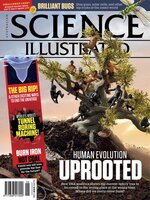 Issue 106
Issue 106
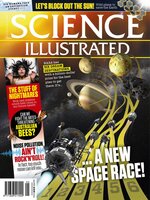 Issue 105
Issue 105
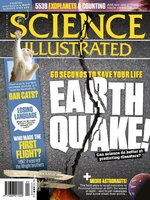 Issue 104
Issue 104
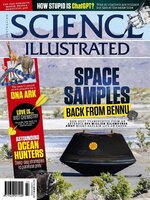 Issue 103
Issue 103
 Issue 102
Issue 102
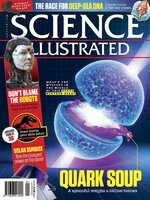 Issue 101
Issue 101
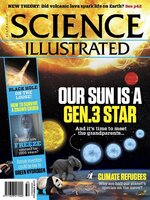 Issue 100
Issue 100
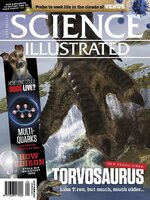 Issue 99
Issue 99
 Issue 98
Issue 98
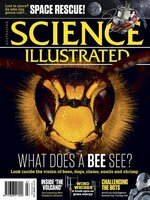 Issue 97
Issue 97
 Issue 96
Issue 96
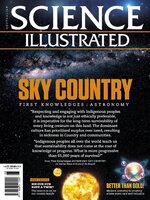 Issue 95
Issue 95
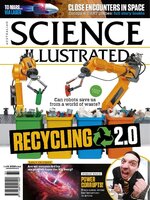 Issue 94
Issue 94
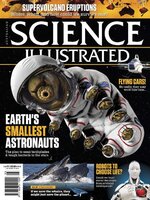 Issue 93
Issue 93
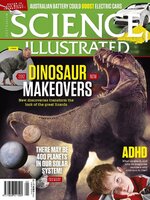 Issue 92
Issue 92
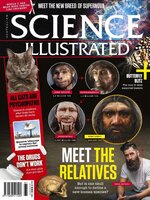 Issue 91
Issue 91
 Issue 90
Issue 90
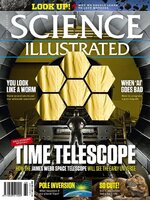 Issue 89
Issue 89
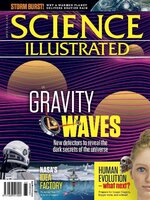 Issue 88
Issue 88
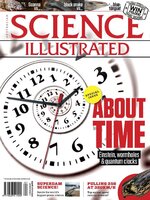 Issue 87
Issue 87
 Issue 86
Issue 86
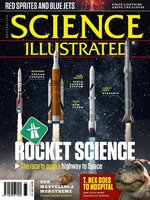 Issue 85
Issue 85
 Issue 84
Issue 84
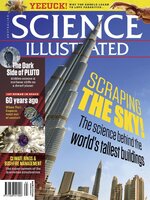 Issue 83
Issue 83
